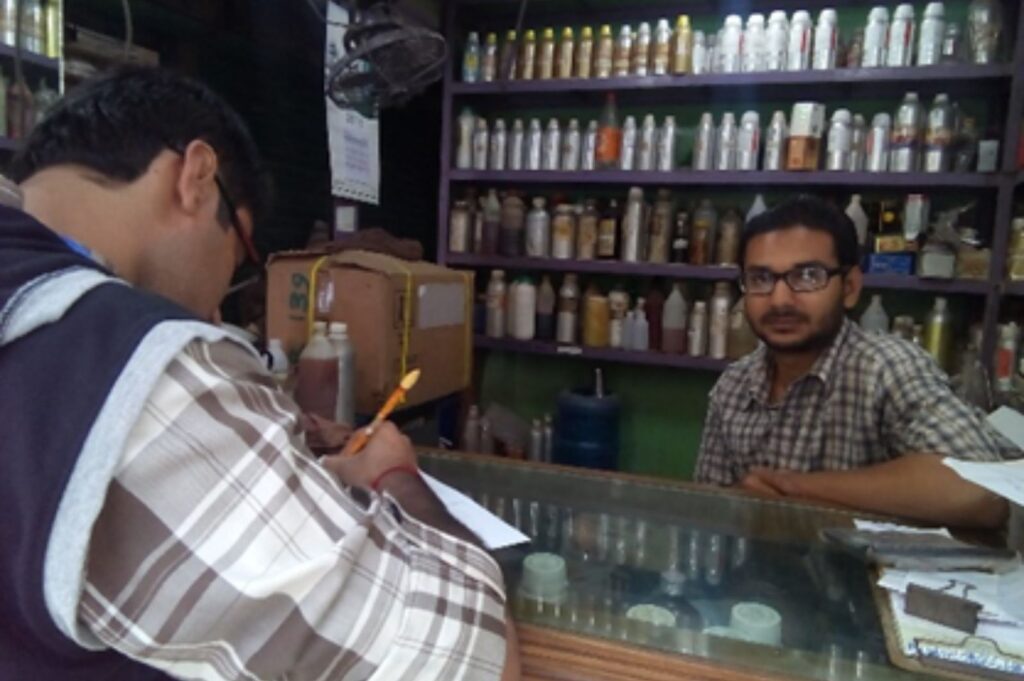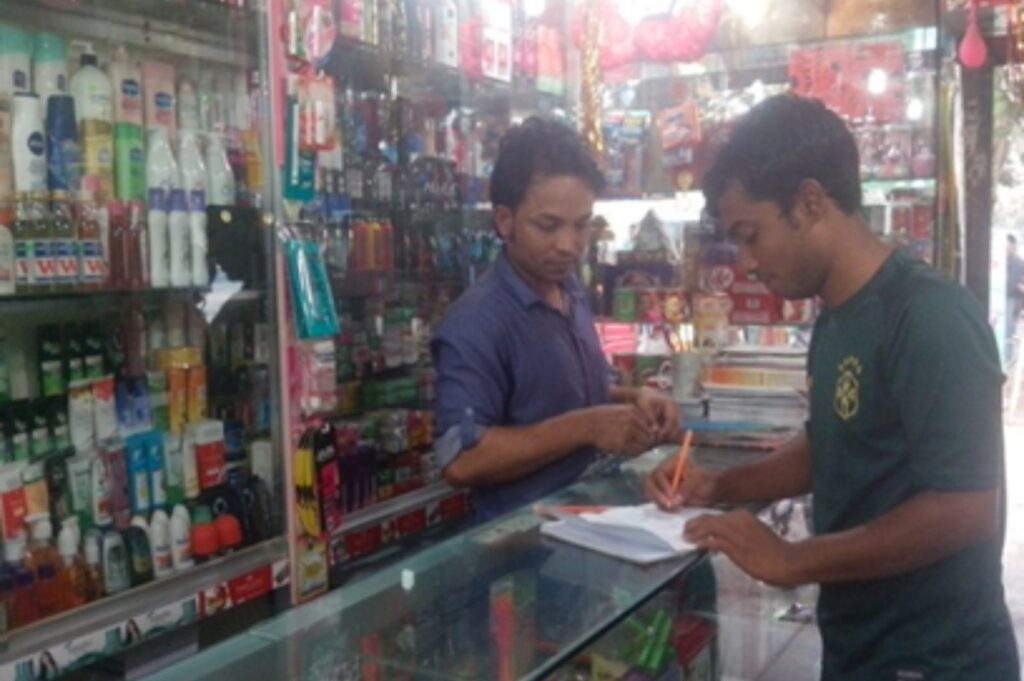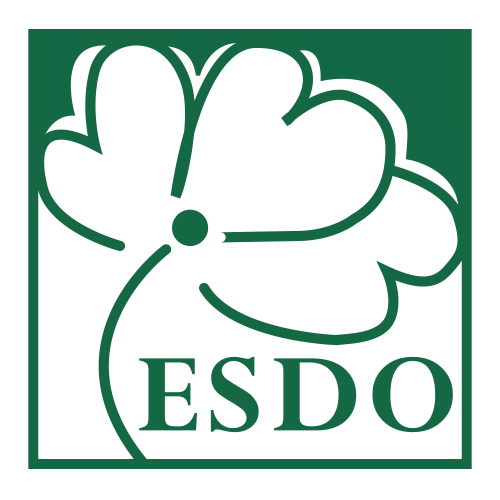Demand Reduction of
MERCURY-FREE PRODUCTS
Background
Environment and Social Development Organization-ESDO has undertaken the project titled “Reduction of demand of mercury in mercury containing products in Bangladesh” in collaboration with the United Nations Environment Programme (UNEP), is a significant initiative aimed at addressing the issue of mercury use and its impact on the environment and public health in Bangladesh. This initiative also aims to support Bangladesh government towards ratification of Minamata convention.
The Minamata Convention on Mercury is indeed aimed at protecting human health and the environment from the adverse effects of human-induced emissions and releases of mercury and mercury compounds.
- Mercury is recognized as one of the most toxic substances known to humans. Even small amounts of exposure to mercury can have severe health impacts.
- Mercury has the ability to pass through the skin, the blood-brain barrier, and the placental barrier. This property makes it particularly dangerous as it can cause devastating effects on the function and growth of the developing brain in fetuses. It is especially harmful to neurological development.
- Mercury is also nephrotoxic, meaning it can damage the kidneys. Prolonged exposure to mercury can lead to kidney damage and dysfunction.
- Mercury is not limited by national borders; it can cross global barriers and move from one country to another through atmospheric and aquatic transport. This transboundary movement underscores the need for international cooperation to address mercury pollution effectively.
- Mercury has the capacity to bioaccumulate in organisms and biomagnify in food chains. This means that as mercury moves up the food chain, it becomes increasingly concentrated in the bodies of organisms, posing greater risks to top predators, including humans who consume fish and seafood.
- There are various routes of exposure to mercury, including inhalation of inorganic mercury vapor (e.g., in industrial settings), absorption through the skin, ingestion of methyl mercury (commonly found in contaminated fish), and exposure during manufacturing processes.
- Mercury can pose a significant health threat when it is spilled in a small and poorly ventilated room. Inhalation of mercury vapor in such confined spaces can be particularly dangerous.
Objectives
- Raise awareness among the general public, industries, and relevant stakeholders in Bangladesh about the hazards associated with the use of mercury and mercury-containing products.
- Promoting mercury-free products is to reduce mercury pollution in the environment.
- The promotion of mercury-free products is often driven by the goal of protecting human health and minimizing the risks associated with mercury exposure.
- Many countries, including Bangladesh, are signatories to international agreements like the Minamata Convention on Mercury. These agreements set targets and guidelines for reducing mercury use and emissions.
- Mercury-free products are often associated with more sustainable and environmentally friendly practices. Encouraging the use of these products can align with broader sustainability goals, including reducing the ecological footprint of various industries.
- Increasing awareness among consumers about the risks associated with mercury and the availability of mercury-free alternatives is another common objective.
- Education campaigns and outreach programs may be initiated to inform the public about the benefits of choosing mercury-free products.
Activities
ESDO conducted a comprehensive study to better understand the presence and impact of mercury in various sectors of the country.The study appears to have focused on identifying products that contain mercury. These products can include items in healthcare, electronics, batteries, and cosmetics, among others. Understanding the prevalence of such products is crucial for developing strategies to reduce their use. Identifying mercury hotspots is an essential part of understanding where mercury pollution is most concentrated. ESDO collected information from different sectors, including energy sources, metal production, healthcare, electronics, battery industry, cement, mercury chemical, and jewelry and beauty products. Consulting with stakeholders is essential for a comprehensive assessment and for gaining insights into potential alternatives. ESDO’s study likely discussed strategies and recommendations for phasing out the use of mercury and mercury-containing products. This could include advocating for policy changes, promoting alternatives, and raising awareness about the dangers of mercury. Quantifying the amount of mercury released and emitted from primary and secondary sources is essential for understanding the scale of the problem. This data can be used to track progress in reducing mercury pollution over time. Involving stakeholders, including government agencies, industries, and the public, in discussions and actions related to mercury reduction is vital for the success of such initiatives. The study was conducted in Dhaka and its adjoining areas to find out Hg sources, Hg containing products and its hotspots in Bangladesh. Primary information was collected from different sectors namely; industrial and energy sectors, health care, electronics and electrical equipment’s, battery industry, cement, chemical, and jewelry and beauty product’s consumer based on purposive sampling. The objectives of the consultations with scholars and scientists of several industries and universities, health specialists, officials from Department of Environment (DoE), Bangladesh Standard Testing Institute (BSTI), Bangladesh Chemical Industries Corporation (BCIC), government wings were: (i) technical assistance and knowledge sharing on the banning of mercury based products and processes as the need of ratifying the Minamata Convention; (ii) Recommend and propose guidance in line with the existing international standard, regulatory framework and best practice for alternatives to mercury in products; (iii) Proposing an environmentally safe & sound mercury waste management; and (iv) Disseminate study findings and possible outcomes.
1.1 Cement production
Urbanization rate is very fast in Bangladesh, which promotes huge growth of constructions (buildings) works. Similarly, Cement Industry has been observed a stable growth in last three years driven by steady pace of urbanization and construction of large infrastructure projects. At present Bangladesh has 33 cement industries, mostly situated in Dhaka, Narayongonj, and Chittagong. Usually most of these industries are located near major river systems of Bangladesh for ease of transportation.
Under the ESDO study, questionnaire based survey were conducted in seven cement industries situated in Narayongonj and Dhaka. All these industries produce both Portland and Portland composite cement. According to the survey it has been found that, total production of 7cement industry is 34, 09000 Tones/ year.
1.2 Paper and Pulp Production
Pulp and paper mills
The pulp and paper industry is the single largest consumer of caustic soda worldwide, and paper suppliers and manufacturers thus have a large role to play in the marketplace to reduce mercury pollution problems from these sources.
Uses of mercury in pulp and paper mills
Pulp and Paper mills use mercury cells to produce caustic soda or lye to break down wood pulp for paper-making. The paper and pulp industry also contributes substantially to mercury emissions through its heavy use of energy. Moreover, Phenyl mercury acetate is sometimes added to pulp in the paper-making process as a fungicide.
There are four state-controlled pulp mills in Bangladesh. They are: Karnafuli Paper Mills (KPM), Sylhet Pulp and Paper Mills (SPPM), North Bengal Paper Mills (NBPM), and Khulna Newsprint Mills (KNM). These are run by Bangladesh Chemical Industries Corporation. The major pulp and paper industries in private sector in Bangladesh have grown in Dhaka and Chittagong regions. Although there are almost 80 paper mills, only KPML is the integrated pulp and paper industry in Bangladesh on foreign pulps and recycle fiber. The share of KPM is less than 5% of total paper production in the country. KPML produces both bleached and unbleached virgin pulps.
1.3 CFL Light Bulbs
In energy deficit country like Bangladesh, people were encouraged to use low-energy bulbs or compact fluorescent lamps (CFL) that consume less electricity. There had been a marked rise in the demand for CFLs throughout the country. According to the report “Mercury Sources: Products and Hotspots in Bangladesh” prepared by ESDO in 2012, because of CFL’s bulb large market share, it has been estimated that fluorescent lamps represent approximately 80 percent of the total mercury used in lighting. According to the report the annual demand for CFL bulbs in Bangladesh has reached 11 million.
However, certain environmental and public health concerns have been raised in relation to the use and disposal of CFLs because the bulbs contain mercury, which poses a serious risk to health and safety. In a report by the European Commission (EC), children and babies in the womb are the most vulnerable to mercury pollution. Even though CFLs contain lower levels of mercury than fluorescent tube lights, inhaling the mercury vapors released by broken CFL bulbs can impair the central nervous system or cause kidney failure. The report states that in Bangladesh, garbage handlers and children engaged in scavenging are particularly at risk, and are often the worst victims of the unplanned disposal of bulbs. However, more than 95% of the
mercury from the bulbs can be extracted through recycling.
Every year in Bangladesh, several million used CFLs are ending up in waste bins because people using the bulbs lack awareness of the dangers of mercury poisoning and contamination. The absence of proper recycling facilities to dispose of these bulbs puts people’s health at great risk, as CFLs must be disposed of safely to avoid contamination and poisoning.
ESDO surveyed on random sampling basis with 100 stores from different markets and collected data from those 100 store. ESDO used both direct interview and observation method to collect the data from the importers, wholesalers and retailers of different markets in Mohammadpur, Mirpur, Stadium market, Nawabpur area. These markets represent about 70% of the lighting and electric market of Dhaka city.
According to the survey, among 100 retailers majority (51%) supply Compact Fluorescent Lamp/Light Bulb followed by Linear Fluorescent Lamp (29%), Halogen lamp (10%) and High Intensity Discharge Lamp (HID) (10%).
1.4 Jewelry with Mercury
ESDO randomly selected 110 jewelry importers and retailers for taking response about Mercury in their products, Hg hazards, whether they are aware about Hg contamination or not. In this study 5 jewelry shops have been surveyed that have their own workshop along the shop in the same building. During the survey it has found that there are approximately 36 jewelry shops in Tatibazar and approximately 120 jewelry shops (Out of them 100 have their own workshops) in Bangladesh.
1.5 Battery
According to the report “Mercury Sources: Products and Hotspots in Bangladesh” prepared by ESDO in 2012, there are a variety of button-cell batteries that contain mercury, including zinc air, silver oxide, and alkaline manganese oxide batteries. Button-cell batteries are small, thin, energy cells that are not rechargeable. They are most commonly used in watches, toys, hearing aids, and other small and portable electronic devices. The manufacturing of small electronic devices is often possible due to the small size of the button-cell batteries.
- A button cell battery contains 0-25 mg of mercury
- Highest mercury content is in mercuric oxide batteries, which is 40% mercury by weight.
- Zinc air, silver oxide, and alkaline manganese button batteries typically contain from 0.1% to 2.0% mercury by weight.
On the basis of random sampling ESDO did a survey among 90 battery retailers and suppliers to assess the recent situation of mercury containing button cell batteries in Bangladesh.
Consumer products with intentional use of Mercury
1. Thermometers, Sphygmomanometers with mercury
2. Electrical and electronic switches, contacts and relays with mercury
3. Light sources with mercury
4. Batteries containing mercury
5. Biocides and pesticides
6. Paints
7. Pharmaceuticals for human and veterinary uses
8. Cosmetics and related products
Mercury in Cosmetics
According to the report “Mercury Sources: Products and Hotspots in Bangladesh” prepared by ESDO in 2012, ESDO has collected 12 fairness beauty products that have more demand from consumer purchasing point of view. These products were analyzed in Bangladesh Council of Science and Industrial Research (BCSIR). All the samples were analyzed in Atomic Absorption Spectrometer using Cold Vapour Unit. The table below shows the Hg concentration in each product.
It is very alarming that all consumer fairness beauty products that ESDO has analyzed are contained harmful Mercury. Highest (4653 ppm) level of Hg recorded in Garnier, on the other hand, lowest (3361 ppm) in Shumons Aroma. Moreover, Hg content in Fair & Lovely Ayurvedic (4004 ppm), Fair & Lovely Max fairness (4174 ppm), Modern (4152 ppm) and Fair & Handsome (Emami) (4133 ppm) exceeded 4000 ppm. Rest of the fairness products contain Hg lower concentration but above 3000 ppm. It can be said from analysis that all products contain Hg ranging from 3000 to 5000 ppm.
Moreover, after analyzing all the collected data from consumer group, we came to know people especially young group are now tend to use different cosmetic both from local and foreign shops. Their preferences for cosmetics are mostly for fairness cream and fancy cosmetics. But most of them are unaware about it. Though some of them knew about hazardous element in mercury, they are not properly aware of its effect on their skin. All of them are need to become aware regarding hazardous element in beauty products for safer health in future.
Regulations on mercury containing cosmetics
Mercury level for skin whitening creams being manufactured and marketed in local markets of Bangladesh was standardized by the Bangladesh Standards and Testing Institution below 1 ppm, after the draft finalized by the Cosmetics and Related Product Sectional Committee and approved by the Chemical Divisional Committee. The standard was revised by in 2011. But specialized skin creams, such as antiperspirant creams, whitening creams, acne creams, hormone creams etc. which have an effect on the physiological functions of the body or for which therapeutic claims are generally made, are not included in this standard. Atomic Absorption Spectrophotometric method is used to determine mercury vaporizer unit in skin creams by BSTI.


